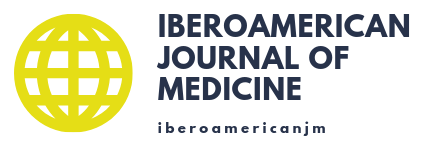Head Injuries, a general approach
Siniša Franjić
Abstract
When a person with a head injury arrives at the hospital, doctors and nurses first check life signs: cardiac work, blood pressure and breathing. For those who do not breathe satisfactorily, a extractor fan may be required. Doctors immediately assess the patient's state of mind and memory. They also test the brain's basic functions by checking the size of the pupils and their response to light, assessing reactions to sensations such as heat and stab of the needle, and testing the ability to move their arms or legs. Computed tomography or magnetic resonance imaging is required to evaluate possible brain injury. Traumatic brain injury occurs when an external mechanical force causes brain dysfunction. Brain trauma is usually the result of a violent hit to the head. An object that pierces the skull, such as a bullet, can also cause brain trauma. Mild trauma can be caused by temporary brain cell dysfunction. More serious brain trauma can lead to bruising, torn tissue, bleeding and other physical injuries to the brain, which can result in long-term complications or even death. Head injuries are the cause of disability and death of people under the age of 50, more than any other type of neurological impairment. Nearly half of people with severe head injuries die. The brain can be damaged even when the skull is not pierced.
Keywords
References
1. Godwin-Austen RB. Neurology. In: Jackson JP. A Practical Guide to Medicine and the Law. London, UK: Springer-Verlag London Limited; 1991:137-138.
2. Hefton SA, Chang WTW. Neurological Illness. In: Nable JV, Brady W. In- Flight Medical Emergencies: A Practical Guide to Preparedness and Response. Cham, Switzerland: Springer International Publishing AG; 2018:68.
3. Peniket D, Grove R. Rehabilitation of Patients with an Acquired Brain Injury or a Degenerative Neuromuscular Disorder. In: Jester R. Advancing Practice in Rehabilitation Nursing. Oxford, UK: Blackwell Publishing; 2007:137.
4. Shamil E, Ravi P, Mistry D. 100 Cases in Emergency Medicine and Critical Care. Boca Raton, USA: CRC Press, Taylor & Francis Group; 2018.
5. Wartenberg, KE, Mayer SA. Trauma. In: Burst JCM. Current Diagnosis & Treatment Neurology, 2nd ed. New York, USA: The McGraw-Hill Companies, Inc.; 2012:177.
6. Nicholas M, Helm-Estabrooks N. Differential Diagnosis of Language Disturbance in Adults. In: Johnson AF, Jacobson BH. Medical Speech- Language Pathology: A Practitioner's Guide, 3rd ed. New York, USA: Thieme Medical Publishers, Inc.; 2017:46.
7. McGillicuddy DC, Gillicuddy JE. Traumatic Head Injury. In: Edlow JA, Selim MH. Neurology Emergencies. New York, USA: Oxford University Press, Inc.; 2011:186-187.
8. McBride DQ. Neurosurgical Critical Care. In: Bongard FS, Sue DY, Vintch JRE. Current Diagnosis and Treatment Critical Care, 3rd ed. New York, USA: The McGraw-Hill Companies, Inc.; 2008:689.
9. Kodosky JT. Head and Brain Trauma. In: Salyer SW. Essential Emergency Medicine: For the Healthcare Practitioner. Philadelphia, USA: Saunders, Elsevier; 2007:1069.
10. van Driel P. Spinal trauma. In: Cameron P, Jelinek G, Kelly AM, Brown A, Little M. Textbook of Adult Emergency Medicine, 4th ed. Edinburgh, UK: Churchil Livingstone, Elsevier; 2015:89.
11. Braen GR, Jenkins JL, Basior J, Cloud S, DeFazio C, McCormack R. Manual of Emergency Medicine, 6th ed. Philadelphia, USA: Lippincott Williams & Wilkins, Wolters Kluwer; 2011.
Submitted date:
01/12/2020
Reviewed date:
01/22/2020
Accepted date:
01/24/2020
Publication date:
01/23/2020

